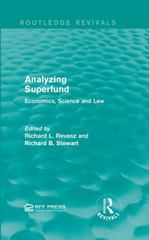Question
1. The U.S. and China produce guns and rice. The country with the lowest opportunity cost of guns (in terms of rice) will a. import
1. The U.S. and China produce guns and rice. The country with the lowest opportunity cost of guns (in terms of rice) will
a. import guns.
b. have an absolute advantage in guns.
c. export rice.
d. have a comparative advantage in rice.
e. have a comparative advantage in guns.
2. Describe different statements about marginal cost (MC) and show how it is calculated.
3.
Itchy Scratchy
Bombs 10 8
Missiles 6 4
The table above shows how many bombs or missiles Itchy and Scratchy can produce in one year.(For example, Itchy could produce 10 bombs or 6 missiles in a year.)Which of the following is an accurate statement about absolute advantage?
a. Itchy has the absolute advantage in both goods.
b. Scratchy has the absolute advantage in both goods.
c. No one has the absolute advantage in missiles.
d. Itchy has the absolute advantage in bombs, while Scratchy has the absolute advantage in missiles.
e. Itchy has the absolute advantage in missiles, while Scratchy has the absolute advantage in bombs.
4. When one person uses a common pool resource,
a. an externality arises.
b. other people are worse off.
c. it is difficult to charge him or her for usage of it.
d. that person gets the benefits of usage.
e. all of these answers are correct.
5. Producer surplus is measured by
a. profits.
b. the area above the supply curve but below the price.
c. the area below the demand curve but above the price.
d. the area below the supply curve.
e. the area above the average cost curve but below the price.
6. If the price elasticity of demand for radios is 2.5, then a 50 percent reduction in the price of radios will lead to
a. the sale of 200 additional radios.
b. the sale of 125 percent more radios than before.
c. the sale of 150 percent more radios than before.
d. the sale of 50 percent more radios than before.
e. the sale of 25 percent more radios than before.
7. An important implicit cost of almost every business is
a. the cost of accounting services.
b. the cost of compliance with government regulations.
c. the return capital invested in the business could have earned elsewhere.
d. interest payments on debt.
e. payments to outside contractors.
8. Other things remaining the same, as U.S. imports increase, the quantity of
a. U.S. dollars demanded increases.
b. foreign currency demanded decreases.
c. U.S. dollars supplied decreases.
d. foreign currency demanded increases.
e. none of the above
9.
The silverware industry has been in serious decline since the 1980s. Family dining habits are less formal so people purchase less silverware. Also, in 1979-1980, the price of silver increased from $5 to $21 per ounce. Which graph in the above figure best illustrates these developments?
a. (1)
b. (2)
c. (3)
d. (4)
e. all of these figures are equally good
10. In 1862, the Homestead Act made land available to farmers at a price of zero. Yet many farmers preferred to purchase land along the rail line from the railroad. The farmers
a. were fooled by the railroad owners.
b. did not understand supply and demand analysis.
c. knew the soil was better near the railroad tracks.
d. realized it would be less costly to grow and transport crops on land near railroads.
e. were bribed by the railroad owners.
11. A firm's total cost is $10,957 when it produces a quantity of 50.Rounded to the nearest dollar, what is the firm's average total cost at this quantity?
a. 413
b. 250
c. 219
d. 187
e. none of the above
12. Wendy sells motor homes in the retail market.She buys the motor homes from the manufacturer for a cost that does not vary with the number she purchases. She can sell six per week at $20,000 each. If she limits sales to five, she can charge $21,000 each. She will sell six per week if the cost of buying each motor home from the manufacturer is no more than
a. $20,000
b. $10,000
c. $15,000
d. $21,000
e. $30,000
13. Suppose the price elasticity of demand for a product is infinite. This means that:
a. if you increase the price 1%, revenues will increase.
b. if you increase the price 1%, revenues will stay the same.
c. if you increase the price 1%, revenues will fall to zero.
d. if you increase the price 1%, profit will increase.
e. none of the above
14. Which of these would cause a leftward shift of the demand for tongue piercings?
a. a tongue ring fad
b. discovery that tongue piercings can lead to infections
c. lower price of tongue rings
d. higher incomes among young people
e. higher wages for tongue piercers
15. In a market-based economic system, the use of scarce resources
a. occurs in an essentially random manner.
b. is determined primarily by consumer demand.
c. does not respond to changes in preferences.
d. is fixed by the appropriate government agency.
e. depends entirely on the whims of wealthy capitalists.
16.
In the figure above, how much more than the competitive price will the monopolist charge?
a. $15
b. $3
c. $12
d. $2
e. $1
Step by Step Solution
There are 3 Steps involved in it
Step: 1

Get Instant Access to Expert-Tailored Solutions
See step-by-step solutions with expert insights and AI powered tools for academic success
Step: 2

Step: 3

Ace Your Homework with AI
Get the answers you need in no time with our AI-driven, step-by-step assistance
Get Started


